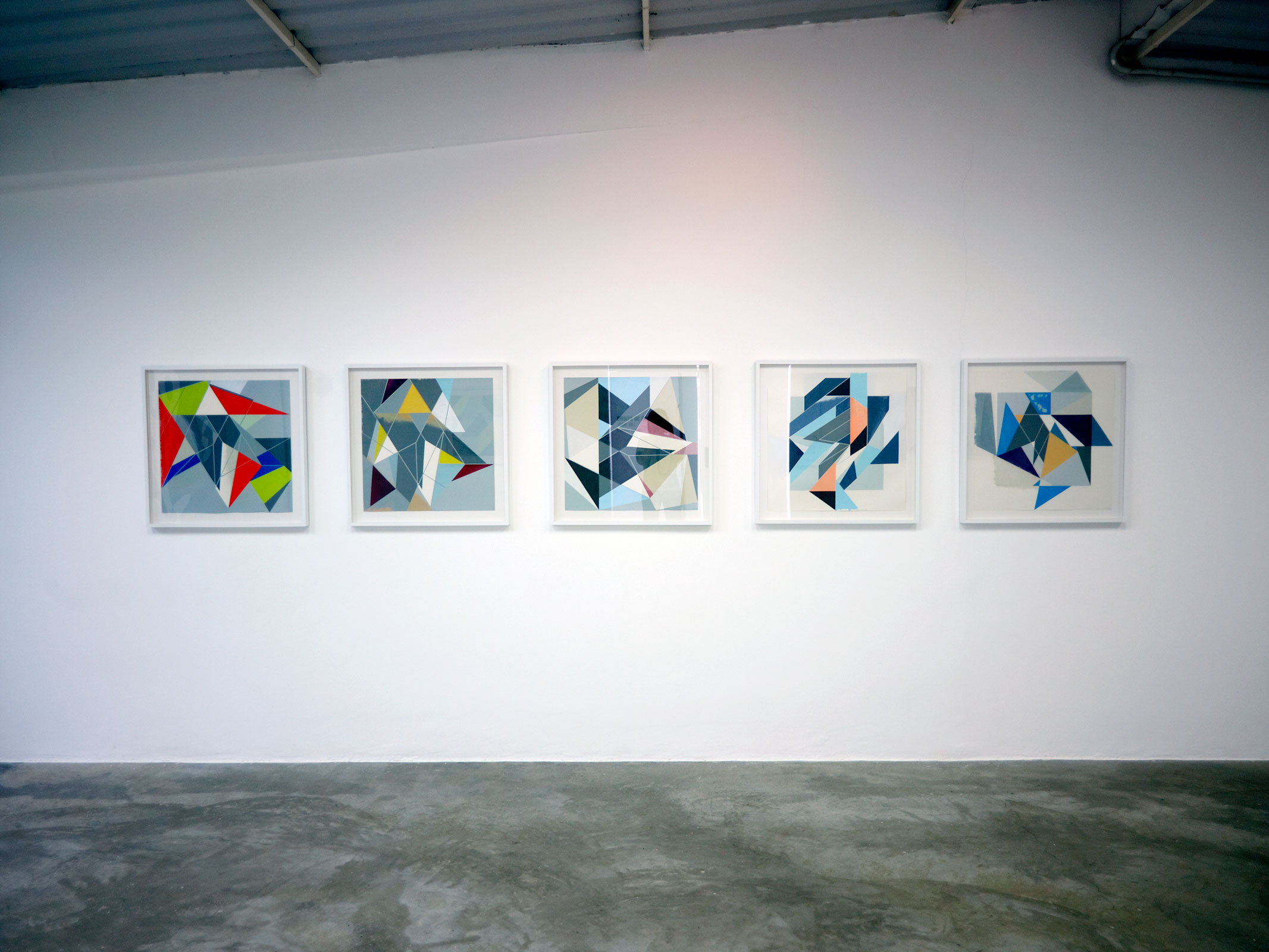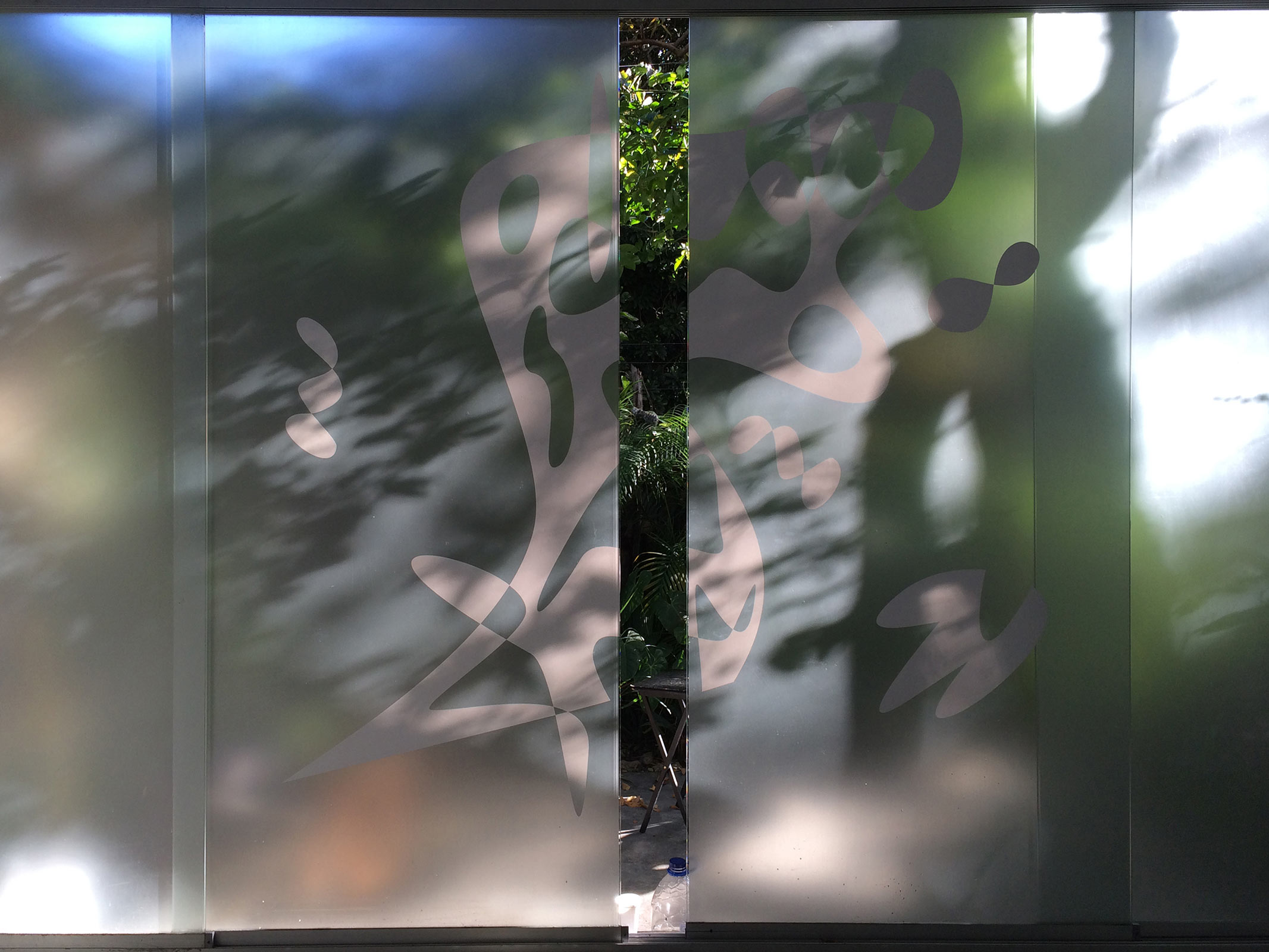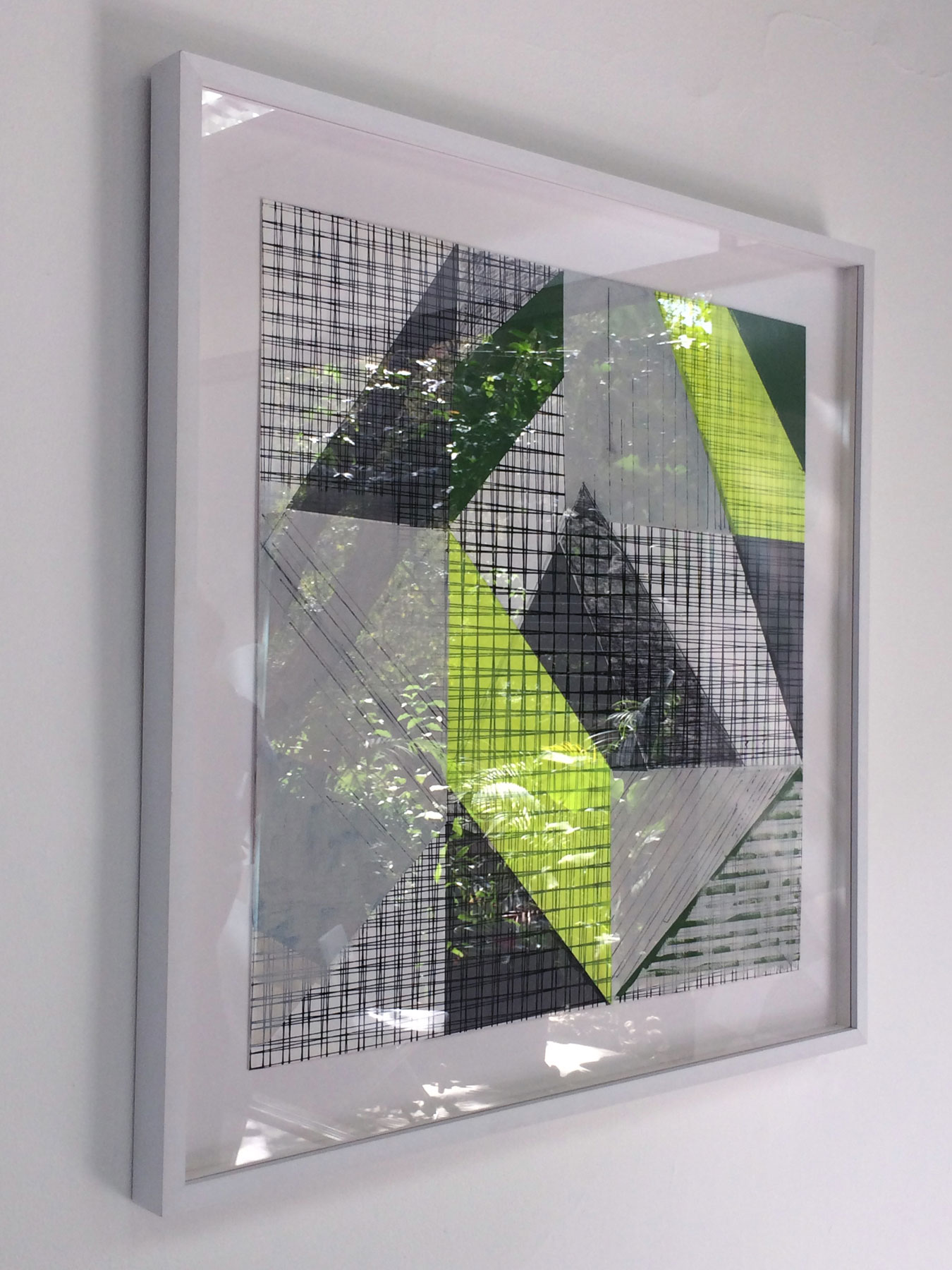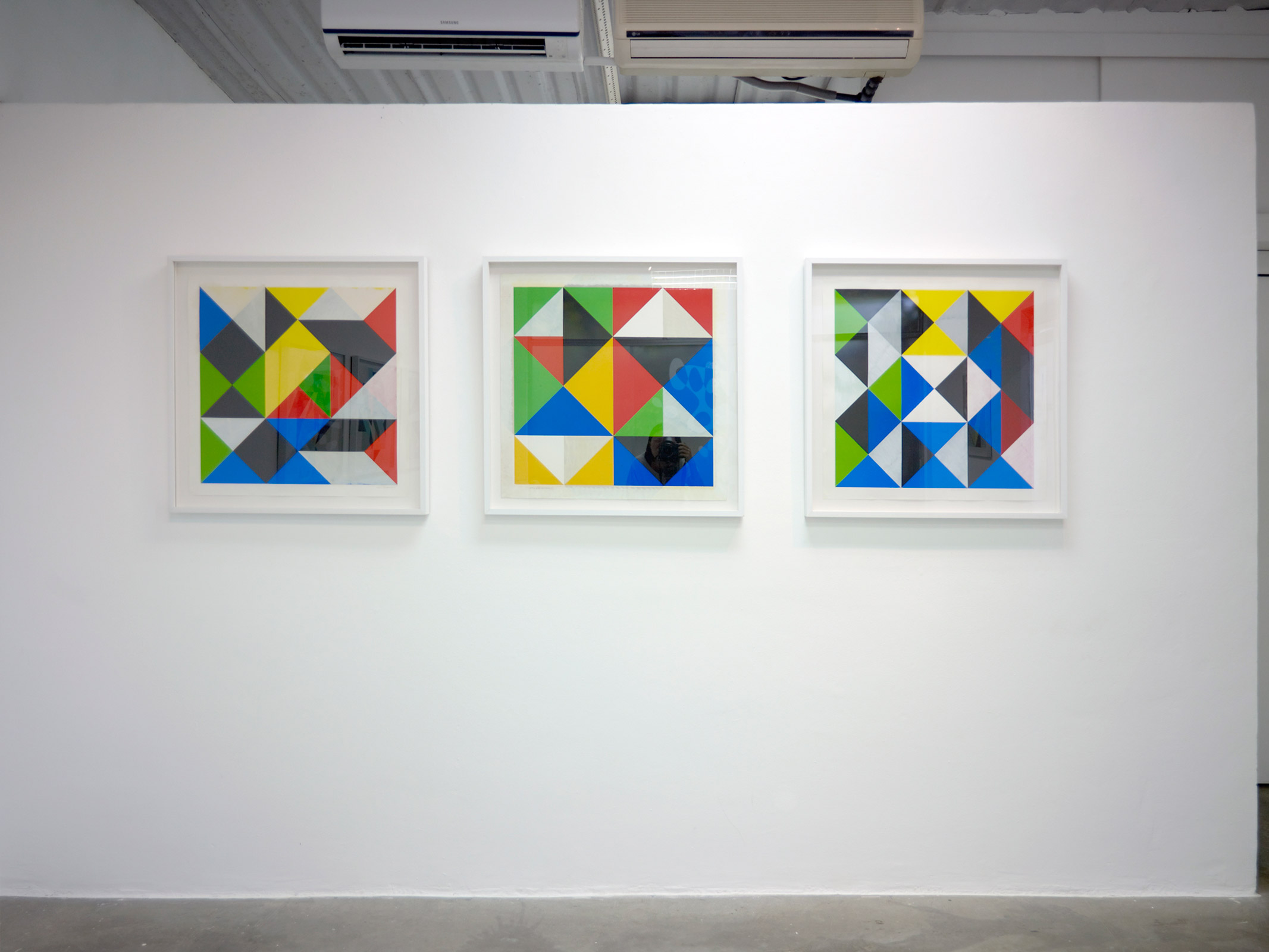DROITS DE SUCCESSION
Oficina #1
Caracas, Venezuela
2014
This was Gili’s second solo show at Oficina#1 in Caracas. For this exhibition Gili worked over screen-printed editions by artists that were important to the local history of abstraction in the 1970s; at the same time enhancing and destroying the previously existing works and questioning authorship, heritage and authenticity. Works by the likes of François Morellet, Max Bill, Marcel Floris and Carlos Cruz-Diez were defaced in a way that is reminiscent of the dialogue in which Gili engages in his architectural interventions.
Statement by Jaime Gili on Droits de Succession: “In the more than half a century-old Venezuelan experience of interaction between architects and visual artists, we have learned that if such ‘integration’ is not born out of an architectural project, the result may resemble an uncomfortable usurpation of the space. In a 1951 symposium in the MoMA, Catalan architect Josep Lluís Sert demonstrated the interest of the times in the so-called ‘integration of the arts’, differentiating between three levels of interaction between visual arts and architecture, as well as rebuking both architects and artists for wasting opportunities of working closer together. The optimism of the times was such that all practitioners were thought to be good enough to work together, which was simply not true. In my personal experience, there is an anonymous architecture of basic spaces that allows them to gracefully accommodate visual arts, even if they were never expected to.
Even though shocking at first, the interaction may in those cases seem pre-planned. In contrast, there is another type of architecture in which dialogue is difficult. If, from the outset, good, characterful architecture did not consider possible intervention in its spaces, sometimes it is impossible to do it. The challenge may be attractive, but it is important to be able to withdraw if necessary. The majority of my interventions in domestic spaces are done in practical, basic interiors, yet there are cases of interventions I have done in more difficult conditions. Examples of this are those that appropriately are meant to be non-permanent, such as the one done in Bloomberg space in 2009, where the idea was an explosive dialogue which acknowledged the temporary character of the intervention. Something similar to this happens in the exhibition Droits de Succession, where I worked directly onto often forgotten editions and artists proofs by artists who were important in the development of Venezuelan abstraction in the 1970s, and whose work I had been collecting for years. Here, however, unlike in a drawing where there might be layers of ideas, there are no previous sketches; the work is in itself the idea, coming through from the previous works.”
+ Link: Oficina #1+ PDF: TEXT BY FEDERICO VEGAS
Statement by Jaime Gili (Spanish). Droits de Succession (Tributo a las herencias): En la experiencia Caraqueña de más de medio siglo con la integración de las artes entre diversos arquitectos y artistas, hemos aprendido que cuando la idea de integración no nace en el origen de un proyecto arquitectónico, intervenir los espacios puede acabar en una especie de usurpación. El arquitecto Catalán Josep Lluís Sert, demostrando el interés del momento por la integración de las artes en la que Venezuela destacó, diferenciaba en un simposio en el MoMA en 1951 tres niveles de integración de artes plásticas y arquitectura, no sin antes regañar a artistas y arquitectos por no trabajar más de cerca y desperdiciar tantas oportunidades. El optimismo del momento daba quizá para pensar que todos los arquitectos y todos los artistas eran capaces de estas aventuras, lo que no es cierto. En mi experiencia personal, y ya hablando de espacios, creo que hay una arquitectura anónima o de espacios muy básicos, que si bien nunca pretendieron acomodar otras artes se dejan completar fácilmente con intervenciones. Mejoran y agradecen como si de un plan previo se tratara, aunque sea a través de un violento choque con color y dinamismo. Hay en cambio otra arquitectura sobre la que el diálogo se hace más difícil, como en un brutal choque de egos. Si la buena arquitectura no consideró desde el principio los espacios a ser intervenidos, entonces es casi imposible hacerlo. El desafío puede atraer, es necesario probar ideas, pero más importante es poder escoger bien o retractarse a tiempo. Muchas de mis intervenciones de en espacios domésticos en Caracas lo son de espacios básicos, interiores quizá resueltos de forma tan práctica, que en muchos casos podrían ser anónimos. Como ejemplo de intervenciones en arquitectura de mayor carácter, tenemos las que apropiadamente se convierten en intervenciones temporales, como ocurrió en el espacio Bloomberg en Londres en 2007, donde la idea es el diálogo pero a sabiendas de su temporalidad, de que no se pretende modificar para siempre los espacios. Algo parecido pasa quizá con estas piezas de obra gráfica olvidada que he intervenido en los últimos meses. Tras varios años de coleccionar pruebas de estado y restos de stock de artistas de diverso origen, mayormente de los años setenta del siglo pasado, inicié esta serie de dibujos, intervenciones directas sobre obras acabadas sobre papel de artistas como Cruz Diez, Marcel Floris o Morellet. A diferencia de lo que ocurre con los murales, aquí no hay esbozo previo. Como en una pintura o dibujo el plan, si lo hay, viene de los hilos y proyectos que cuelgan de las obras anteriores.
+ LINK: Oficina #1+ PDF: TEXT BY FEDERICO VEGAS





